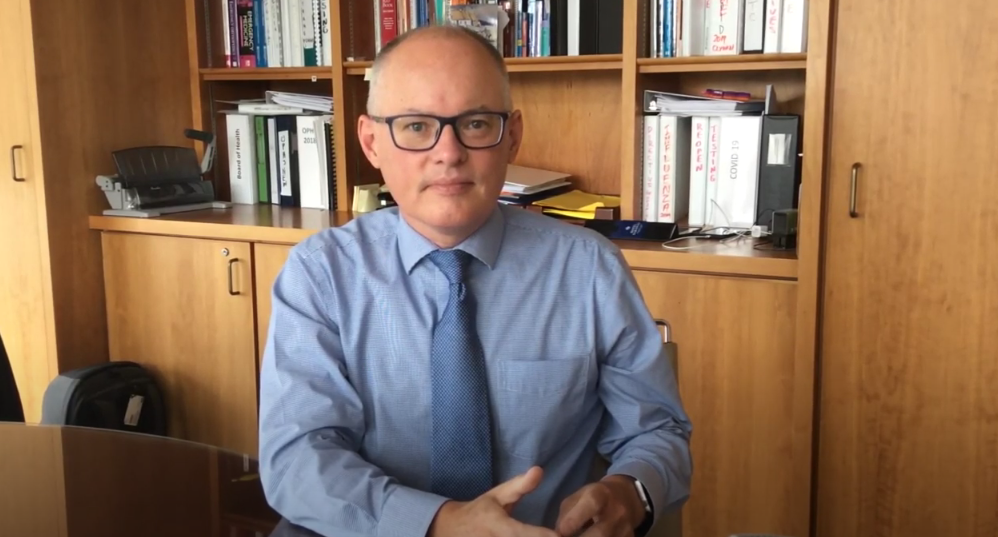Public Health asks residents to ‘give thanks, not COVID-19’ this Thanksgiving

Thanksgiving will be celebrated this weekend, and KFL&A Public Health are urging residents to practice physical distancing with those outside their own households to continue to keep local case numbers low.
Today, Thursday, Oct. 8, 2020, KFL&A Public Health released a COVID-19 transmission model that estimates the potential impact Thanksgiving celebrations may have on disease transmission within the KFL&A region.
Public Health says they are providing the community with information about the anticipated consequences if KFL&A residents are not vigilant in adhering to public health measures.
According to a release dated Thursday, Oct. 8, 2020 to be able to create models, Public Health builds in several criteria to be able to calculate the predictions. They call these modelling assumptions. Public Health says modelling assumptions are often stricter than real-world behaviour so the results are approached using a precautionary principle.
The modelling assumptions and considerations used for these predictions include:
- Individuals remain infectious for 10 days before being removed from community circulation, (either through isolation, dying or recovering). Meaning, people who are infectious are walking around and potentially infecting others for 10 days before isolating themselves.
- The doubling time for cases is 12 days.
- Infection occurs in a population of approximately 212,000 individuals that are spread out over 500 km2 and are well-mixed (this is an estimate of population density of KFL&A area).
- The number of initial active infections circulating in the population is 15 cases (October 5).
The key highlights from the four projection scenarios created by KFL&A Public Heath have been modelled for the time period from October 5 to October 25, 2020. These models include:
- No new cases imported (i.e., imported means people who become infected when they have travelled outside our region and return to our region). This means the current trend continues as is and by October 25 there could be approximately 46 active cases.
- 5 imported cases. This would mean by October 25 there could be approximately 57 active cases.
- 10 imported cases. This would mean by October 25 there could be approximately 67 active cases.
- 20 imported cases. This would mean by October 25 there could be approximately 88 active cases.
According to KFL&A Public Health, from the four projection scenarios modelled, by October 25 our region could see somewhere between 15 active cases (at the lowest end) and greater than 100 active cases (at the highest end). Our behaviour and adherence to public health measures will make all the difference between these two different predictions.
“We wanted to release this modelling to be open about the challenges that a traditional Thanksgiving celebration may have on our community, and remind everyone of the important measures we all need to take to keep low virus activity in our area,” said Dr. Kieran Moore, Medical Officer of Health at KFL&A Public Health. “We need to take action now, particularly ahead of Thanksgiving weekend to prevent a potential surge in COVID-19 cases. I am urging people to practice physical distancing with those outside of their own household, wear a face covering when physical distancing is a challenge or where it is mandatory to do so, wash your hands frequently and thoroughly, and follow social gathering limits and rules.”
Thanksgiving traditions may look a little different this year, but KFL&A Public Health suggest there are still ways that we all can celebrate and ‘give thanks’—not COVID-19—to our loved ones.
- Stay local, support local.
- Don’t travel outside the KFL&A region.
- Stay within your own household.
- Consider a virtual meal with the rest of your family especially those who are elderly or more vulnerable.
- If you must have travellers or travel, do the risk assessment and screen for symptoms using the Ontario.ca screening tool.
- Try entertaining outdoors by having a picnic or barbecue.
- Wear a face covering and stay 2 metres apart.
- Wash your hands or use hand sanitizer often.
- Stay home if you are sick.
- Get tested if you have symptoms of COVID-19.
For the most up to date information on COVID-19, visit www.Kflaph.ca/Coronavirus or www.Ontario.ca/coronavirus.
